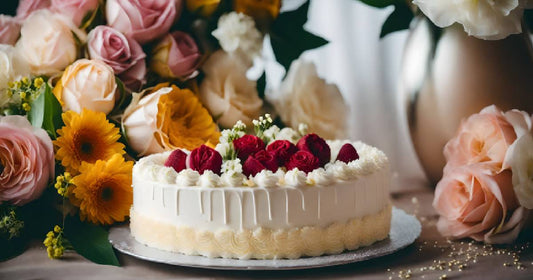Navratri, also known as the Festival of Nine Nights, is one of the most vibrant and widely celebrated Hindu festivals in India. This nine-night extravaganza is dedicated to Goddess Durga and her various avatars. Each day of Navratri is a tribute to a different manifestation of the divine feminine energy, and it's celebrated with great devotion and enthusiasm.
The Nine Days of Navratri: Unveiling the Spiritual Significance
1st Day of Navratri – Pratipada
The first Navratri begins with the worship of Shailaputri, an embodiment of Goddess Parvati. She is depicted riding a bull and carrying a trident. Devotees offer prayers and seek her blessings for strength and prosperity.
- Devi: Shailputri, the daughter of the Himalayas
- Color of the Day: Orange
- Significance: The festival begins with the worship of Shailputri, representing the embodiment of the collective power of Brahma, Vishnu, and Shiva.
Second Day of Navratri – Dwitiya
On the second day, Goddess Brahmacharini is revered. She symbolizes the pursuit of knowledge and wisdom. Devotees pray for an increase in spiritual wisdom and enlightenment.
- Devi: Brahmacharini, the ascetic form of Goddess Parvati
- Color of the Day: White
- Significance: This day signifies spirituality and self-discipline. Devotees seek blessings for peace and prosperity.
Third Day of Navratri – Tritiya
Goddess Chandraghanta, the third form of Durga, is worshipped on this day. She is known for her bravery and is believed to ward off evil and negative energies. Devotees ask for her protection and blessings for courage.
- Devi: Chandraghanta, the fierce form of Goddess Parvati
- Color of the Day: Red
- Significance: Chandraghanta represents courage and bravery. Her blessings are sought for strength and protection.
Fourth Day of Navratri – Chaturthi
The fourth day is dedicated to Goddess Kushmanda, the creator of the universe. She is depicted with eight hands and is believed to provide energy to the cosmos. People pray for health and wealth on this day.
- Devi: Kushmanda, the creator of the universe
- Color of the Day: Royal Blue
- Significance: Kushmanda signifies the cosmic energy that resides within us. Her blessings are sought for health and prosperity.
Fifth Day of Navratri – Panchami
Goddess Skandamata, the mother of Lord Kartikeya, is worshipped on the fifth day. She signifies the nurturing aspect of motherhood. Devotees seek her blessings for the well-being of their children.
- Devi: Skandamata, the mother of Lord Kartikeya
- Color of the Day: Yellow
- Significance: Skandamata represents the nurturing aspect of a mother. Devotees pray for the well-being of their children.
Sixth Day of Navratri – Shashti
On the sixth day, Goddess Katyayani is revered. She is known for her fierce form and is believed to protect her devotees from evil forces. People pray for courage and strength to overcome challenges.
- Devi: Katyayani, born to sage Katyayan
- Color of the Day: Green
- Significance: Katyayani is a warrior goddess, and her blessings are sought for victory over difficulties.
Seventh Day of Navratri – Saptami
Goddess Kalratri, the destroyer of darkness and ignorance, is worshipped on the seventh day. Devotees seek her blessings to remove obstacles and fears from their lives.
- Devi: Kalaratri, the destroyer of darkness and ignorance
- Color of the Day: Grey
- Significance: Kalaratri represents the dark side of existence and the power to annihilate negativity.
Eighth Day of Navratri – Ashtami
Goddess Mahagauri, representing purity and calmness, is revered on the eighth day. Devotees pray for inner peace and purity of heart.
- Devi: Mahagauri, the embodiment of purity
- Color of the Day: Purple
- Significance: Mahagauri symbolizes purity and serenity. Devotees seek her blessings for inner peace.
Ninth Day of Navratri – Navami
Navaratri culminates with the worship of Siddhidatri, during the last Navratri of the season, the ninth form of Durga. She is believed to possess and bestow supernatural powers. Devotees seek her blessings for spiritual growth and enlightenment.
- Devi: Siddhidhatri, the provider of knowledge and enlightenment
- Color of the Day: Peacock Green
- Significance: Siddhidhatri is the bestower of wisdom and spiritual growth. Devotees pray for enlightenment.
About Navratri Festival: A Celebration of Devotion, Dance, and Divine Energy
The Rituals and Traditions of Navratri
Navratri is a festival of immense religious significance in India. During this time, people engage in various customs and traditions. These rituals typically include daily visits to temples, lighting of lamps and diyas, and the singing of devotional songs and bhajans. Additionally, Navaratri is marked by the installation of beautifully decorated idols or images of Goddess Durga in homes and temples, which are adorned with flowers and other offerings.
Sending heartfelt Navratri wishes and messages to your loved ones is an integral part of this celebration. It's a way to extend the blessings and positive vibes of this festive season to those near and dear, even if they are far away.
The Significance of Fasting during Navratri
Fasting during Navratri is a common practice and is believed to purify the mind and body. Devotees observe fasts, abstaining from grains, onions, garlic, and non-vegetarian food. Instead, they consume special Navaratri foods such as fruits, milk, and a variety of flours like kuttu and singhara. The fasting period is seen as an opportunity for spiritual cleansing and self-discipline.
Navratri Music and Dance: Garba and Dandiya
Navratri is synonymous with vibrant music and dance forms like Garba and Dandiya. Garba is a circular dance performed by both men and women around a lit lamp or an idol of Goddess Durga. Dandiya is a dance form in which dancers use colorful sticks while dancing to the beat of traditional music. These dance forms symbolize the worship of Goddess Durga and are a major attraction during Navaratri.
Navratri Celebration Around the World
Navratri is celebrated not only in India but also by Indian communities worldwide. Different regions have their unique way of celebrating this festival. For instance, the United States, the United Kingdom, and Canada host grand Navratri events with Garba and Dandiya dances. The festival has become a global celebration of Indian culture and spirituality. During this global celebration, exchanging Navratri gifts has become a cherished tradition. These gifts can be tokens of your love and a way to share the festive spirit with friends and family, no matter where they are in the world.
Navratri Food: Delicious Recipes and Significance
Navratri cuisine is special and prepared without onion, garlic, and grains. It includes dishes like Sabudana Khichdi, Kuttu Ka Paratha, and Makhana Kheer. These recipes are not only delicious but also have a spiritual significance. People believe that consuming these foods during Navratra helps maintain purity and positivity.
The Role of Goddess Durga in Navaratri
Goddess Durga is the central deity of Navratri and is worshipped in her various forms. Each day of Navaratri is dedicated to a different form of the Goddess, such as Shailputri, Brahmacharini, and Mahagauri. These forms symbolize the different aspects of feminine energy, from purity to strength. Devotees believe that worshipping Goddess Durga during Navratri grants them spiritual blessings and protection.
Navratri and the Divine Feminine Energy
Navratri is a celebration of the divine feminine energy that permeates the universe. It emphasizes the importance of recognizing and respecting the power of the feminine, both in the spiritual and everyday realms. The festival encourages people to acknowledge the strength and nurturing aspects of women and the Goddess.
Famous Navratri Celebrations in India
India is known for its diverse Navratri celebrations. Gujarat's Navratri is perhaps the most famous, with its grand Garba and Dandiya events. Other regions like West Bengal celebrate Durga Puja with immense fervor during Navratri. These celebrations offer a unique cultural experience and are attended by people from around the world.
Navaratri Fashion and Dress Code
Dressing up in traditional attire is an essential part of Navratri celebrations. Women often wear chaniya cholis or lehengas in vibrant colors and adorned with mirror work and embroidery. Men opt for kurtas and dhotis. Each day is associated with a specific color, and participants wear outfits in line with the color code.
Navratri Art and Decorations
During Navratri, homes and temples are decorated with intricate rangoli designs, colorful flower garlands, and artistic torans (door hangings). The idols of Goddess Durga are adorned with beautiful silk sarees, jewelry, and flowers. These decorations add to the festive atmosphere.
Navratri: A Time for Community and Togetherness
Navratri fosters a sense of community as people come together to worship, dance, and celebrate. It's a time when neighbors, friends, and family members join hands to organize and participate in Garba and Dandiya events. This communal spirit brings people closer and reinforces bonds
As the nine nights unfold, devotees perform a variety of rituals, including fasting, reciting prayers, and lighting lamps. In the evenings, vibrant celebrations take place with traditional dances like Garba and Dandiya, where people come together to honor the divine feminine energy.
This festival not only celebrates the power of the goddess but also serves as a reminder of the triumph of good over evil. It's a time for introspection, spiritual growth, and joyful cultural festivities that bring communities closer together. As you celebrate Navaratri, may you be blessed with the divine energy to overcome challenges and embrace positivity in your life.








